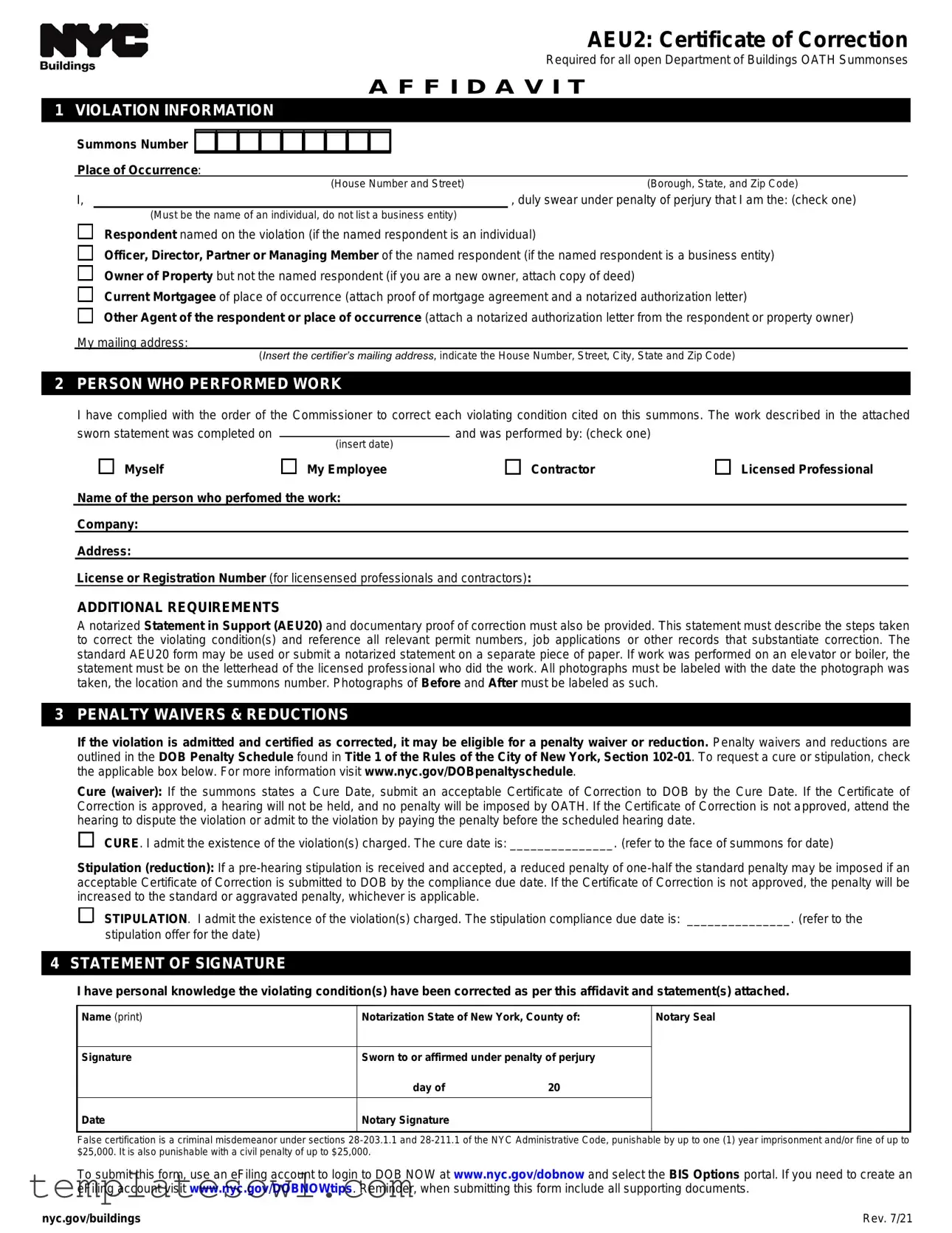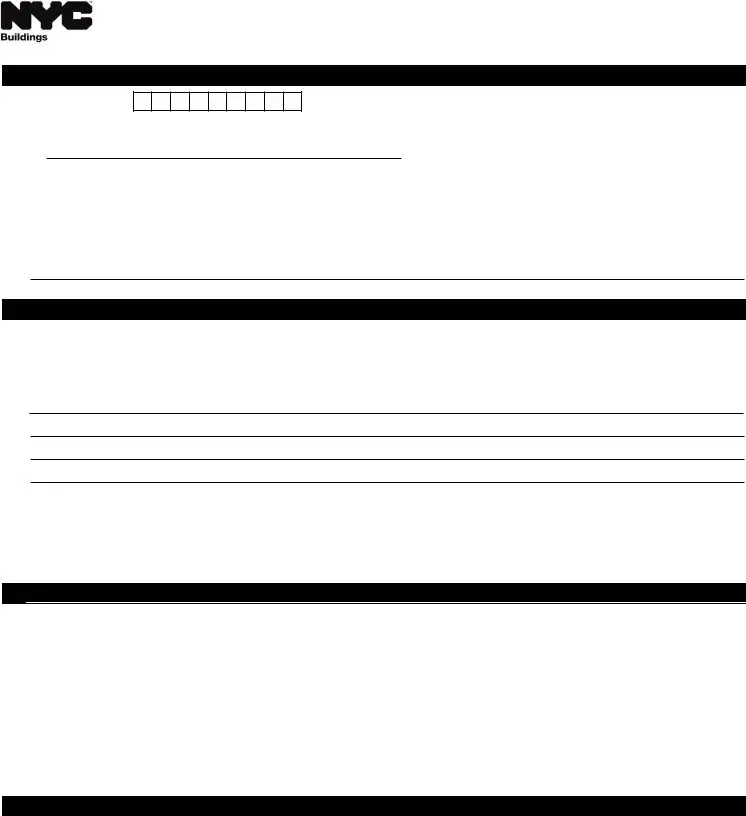What is the Certificate of Correction form used for?
The Certificate of Correction form is required for correcting violations listed in open Department of Buildings OATH Summonses. It serves as an official document confirming that the cited violations have been addressed and corrected. This form helps property owners or their representatives communicate the completion of necessary repairs or actions taken to remedy the violations to the Department of Buildings.
Who can submit the Certificate of Correction form?
The individual submitting the form must be someone with appropriate authority regarding the property or the violation. This could include the named respondent on the violation, an officer of a business entity, the property owner (if they are not the named respondent), a current mortgagee, or an agent authorized by the respondent or property owner. The submitter must provide a mailing address and appropriate documentation to support their authority.
What supporting documents are required when submitting the form?
Along with the Certificate of Correction form, you must provide a notarized Statement in Support (AEU20) that details the steps taken to rectify the violations. This statement should reference relevant permits, job applications, or other records that verify the correction. If the work involved elevators or boilers, the statement must be on the letterhead of the licensed professional who performed the work. Additionally, include photographs showcasing the condition before and after correction, clearly labeled with the date, location, and summons number.
Can I request a waiver or reduction of penalties associated with the violation?
Yes, if you admit the violation and provide an acceptable Certificate of Correction, you may qualify for a penalty waiver or reduction. Two options are available: a Cure, which waives the penalty if approved by the Cure Date, or a Stipulation, which can reduce the penalty if you comply with the agreement by the stipulated due date. Details about waivers and reduction options can be found in the DOB Penalty Schedule.
What happens if my Certificate of Correction is not approved?
If your Certificate of Correction is not approved by the Department of Buildings, you will need to either attend a hearing to dispute the violation or admit to the violation by paying the required penalty before the scheduled hearing date. It is essential to ensure all documentation is submitted correctly to avoid these complications.
What are the consequences of submitting false information on the Certificate of Correction?
Providing false information when submitting the Certificate of Correction can lead to severe consequences. It is considered a criminal misdemeanor under NYC laws, carrying potential penalties of up to one year of imprisonment and/or fines as high as $25,000. Additionally, a civil penalty of up to $25,000 may apply. Accuracy and honesty in your submission are imperative to avoid these severe repercussions.
How can I electronically submit the Certificate of Correction form?
To submit the Certificate of Correction form electronically, you must have an eFiling account. Log in to DOB NOW at www.nyc.gov/dobnow and select the BIS Options portal. If you do not have an eFiling account, you can create one by visiting www.nyc.gov/DOBNOWtips. Remember to include all supporting documents when submitting the form to ensure compliance and processing.

